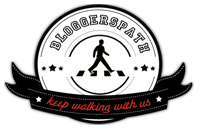On-page SEO optimizes a web page’s content to achieve better rankings. It involves several factors targeted at the page level, including title tags and meta descriptions. Title tags and meta descriptions are direct on-page SEO ranking factors, but they also influence user experience by increasing click-through rates in search results pages. Optimizing them ensures that the content they contain matches user intent.
Keywords
Whether targeting a keyword in your title tag or using it in your meta description, creating content that addresses the search intent will benefit your rankings and your users. You can use tools to find search queries and get ideas for the topics you should cover on each site page. Incorporate your primary keywords into page titles and headers (h1> and h2>). Be sure to also include these keywords in your meta descriptions. People often scan search results, quickly decide if the information is relevant, and then leave the page if they don’t feel it meets their needs. An informative, well-written intro that includes your keyword will prevent your page from falling into this category. Using structured data in your page titles and descriptions (along with a fast website) may improve the chance that your page will earn a featured snippet, which appears as a box at the top of the Google SERP and encourages click-throughs. However, these elements aren’t directly ranked by Google and are instead factors that influence your overall SEO ranking.
Internal linking
The internet is massive, and the way Google navigates it is to provide users with relevant pages for their searches. This is why internal linking is an important part of on-page SEO: it helps search engines better understand the context of your content and the relationship between your different pages. Internal links can drive users to other parts of your website, resulting in lower bounce rates and higher engagement. However, it’s essential to use them sparingly and with careful consideration of user experience. All internal links should be contextual and natural rather than stuffed with keywords. If your internal links are purely keyword-driven, they may be seen as spammy by search engines and cause you to lose rankings. Interlinking is also an excellent way to promote lesser-known or newer content on your website. By linking your most authoritative pages to less-authoritative pages, you can help them climb the rankings with the power of their backlinks and PageRank. However, this should be done with caution as overdoing it can result in a penalty from Google.
Headings
Headings help organize pages and signpost what the content is about. They also improve user experience and accessibility. For example, they make navigating a page’s content easier for screen reader users. They can easily jump to a desired section using a list of headings and listen to the text read aloud until they reach it. Organizing content by headings is important for users and search engines alike. It helps users scan a page and helps search engines better understand the scope and keywords of each page. Using headers correctly can help you rank higher in search engine results pages. A website’s bounce rate is an important metric to measure. High bounce rates indicate that visitors needed help finding what they were looking for or lost interest after visiting a single page. This can be a sign of poor UX design or irrelevant content. It can also indicate that your page is too slow to load. Users don’t like to wait, and Google takes page speed into account when ranking websites.
Metadata
Metadata, or structured data, is another on-page SEO element. This type of SEO helps search engines better understand your website’s content, which can lead to improved rankings. It also makes it easier for search engines to identify whether your content is relevant to a user’s query. A good example of this is incorporating your primary keywords into the headers of your page (h1> and h2>). This can help search engines understand what the topic of your page is about, even if it’s not in your title tag. Another way you can improve your metadata is by using Schema markup on your pages. This helps search engines better understand your content and can result in a rich snippet, encouraging click-throughs from search results.
CTAs
CTAs are clear, action-oriented, and prominently placed buttons encouraging visitors to take a desired action on a website. These can be graphical buttons or text-based. Using the right CTAs can improve conversion rates and maximize the return on investment in website traffic. Using contrasting colors to make CTAs stand out and be more visible is important. It’s also a good idea to test different variations of CTAs and continuously optimize them based on the results of A/B tests. CRO tools can provide valuable information about the performance of your website’s CTAs, including clicks and conversions. The most effective CTAs are clear, action-oriented, prominently placed, and communicate the benefits of taking a specific action. They should be easy to understand and have a compelling call to action relevant to your visitors’ interests. For example, Airbnb’s “Explore Unique Homes” CTA is an attention-grabbing and highly actionable button that drives conversions by encouraging visitors to explore the company’s unique offerings.





